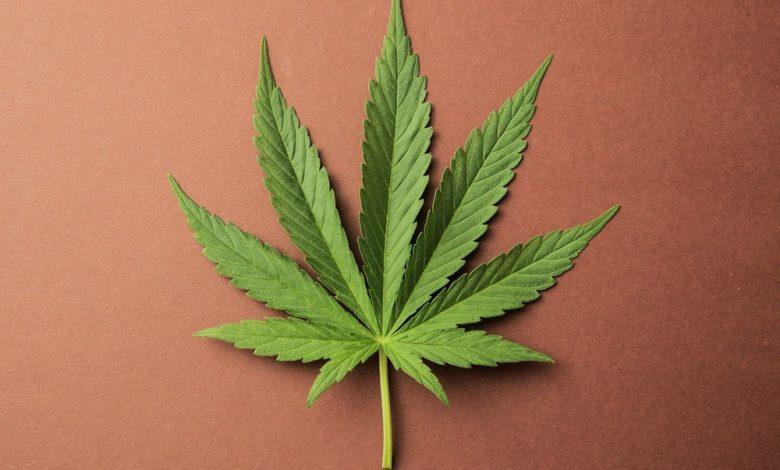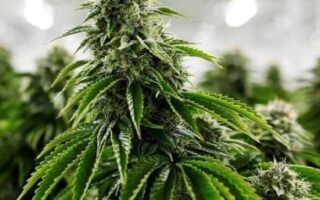In the ever-evolving landscape of drug classification and societal attitudes, few substances spark as much debate as cannabis. Revered for its medicinal properties and recreational pleasures, yet often stigmatized and regulated, cannabis occupies a unique position in the pantheon of psychoactive substances. As discussions surrounding its legalization and therapeutic benefits gain momentum, the question arises: is cannabis a narcotic? This inquiry not only touches upon legal definitions and scientific classifications but also delves into cultural perceptions and historical contexts. Join us as we navigate the intricate layers of this complex issue, exploring what it truly means for cannabis to be labeled a narcotic, and how that classification shapes our understanding of its role in society today.
Table of Contents
- Understanding Cannabis: Classification and Legal Perspectives
- The Science Behind Cannabis: Effects on the Body and Mind
- Dispelling Myths: Cannabis Use in Context of Pain Management
- Navigating Regulations: Recommendations for Responsible Use and Advocacy
- Q&A
- To Conclude
Understanding Cannabis: Classification and Legal Perspectives
The classification of cannabis has long been a subject of debate, as it straddles the line between medicinal properties and recreational use. To understand its classification, it is essential to distinguish between various types of cannabis. Generally, cannabis is categorized into three main species: Cannabis sativa, Cannabis indica, and Cannabis ruderalis. Each species presents unique characteristics, including different chemical compositions, which contribute to their effects on users. Additionally, cannabis contains numerous compounds known as cannabinoids, with the most notable being THC (tetrahydrocannabinol) and CBD (cannabidiol). The presence and concentration of these cannabinoids significantly impact whether cannabis is viewed as a narcotic or a therapeutic substance.
From a legal perspective, the classification of cannabis varies widely across regions and nations. In some jurisdictions, cannabis is still considered a narcotic and is strictly prohibited, while others have embraced its medicinal and recreational use. The evolving public perception has prompted many governments to reevaluate their stance on cannabis. Key factors influencing legal classification include:
- Medical Use: Acceptance of cannabis for treatment of various ailments.
- Recreational Use: Legalization for adult use in certain areas.
- Regulatory Framework: Established guidelines for production, sale, and consumption.
To illustrate this complex legal landscape, the following table provides a brief overview of cannabis legality in selected countries:
| Country | Status | Legal Framework |
|---|---|---|
| United States | Varies by State | Medical and recreational use legal in some states |
| Canada | Legal | Fully legalized for recreational and medical use |
| Netherlands | Tolerated | Decriminalized for personal use; regulated sales in coffee shops |
| Japan | Illegal | Strictly prohibited with severe penalties |
The Science Behind Cannabis: Effects on the Body and Mind
The complex relationship between cannabis and the human body stems from its interaction with the endocannabinoid system (ECS), a vital physiological framework that regulates various processes such as mood, memory, appetite, and pain sensation. The two primary compounds found in cannabis, THC (tetrahydrocannabinol) and CBD (cannabidiol), act differently within this system. THC is known for its psychoactive effects, producing feelings of euphoria and altered perception, while CBD is recognized for its potential therapeutic benefits, such as reducing anxiety and inflammation without producing a “high.” Together, these compounds can influence both physical and psychological states, leading to diverse outcomes that vary from person to person.
Understanding the effects of cannabis also requires knowledge about its delivery methods, which significantly impact its efficacy and experience. Here are some common methods of consumption and their respective potential effects:
- Smoking: Quick onset of effects, typically within minutes; can induce a rapid mental shift.
- Edibles: Delayed onset (30 minutes to 2 hours); prolonged effects that may feel intense.
- Tinctures: Fast-acting once absorbed under the tongue; allows for more precise dosing.
- Vaping: Similar rapid effects to smoking, but often considered a healthier alternative due to less combustion.
While cannabis usage can lead to relief from various ailments, it poses a paradox wherein, despite its medicinal use, it is often categorized alongside narcotics due to its potential for abuse and addiction. The table below illustrates some key factors:
| Factor | Potential Impact |
|---|---|
| Legal Status | Varies by region, affecting accessibility. |
| Health Risks | Can lead to dependence and negative mental health effects for some users. |
| Therapeutic Benefits | May alleviate chronic pain, anxiety, and nausea in certain patients. |
Dispelling Myths: Cannabis Use in Context of Pain Management
The conversation surrounding cannabis often becomes clouded with misconceptions, particularly when discussing its role in pain management. One prevalent myth is that cannabis simply acts as a narcotic like opioids, but this comparison oversimplifies the nuanced ways in which cannabis interacts with the human body. Cannabis contains cannabinoids, such as THC and CBD, which engage with the endocannabinoid system to modulate pain perception without the same level of sedation or risk of addiction commonly associated with traditional narcotics. While some patients report significant relief from chronic pain through cannabis use, the experience can vary widely, emphasizing the importance of personalized medical guidance.
It is also crucial to consider the delivery methods and strains when evaluating cannabis for pain management. Different strains can produce varying effects, and methods such as vaporization or edibles may offer distinct benefits or drawbacks. Here’s a brief comparison of common strains and their potential impacts:
| Strain Type | Pain Relief Potential | Additional Effects |
|---|---|---|
| Indica | High | Relaxation, Sedation |
| Sativa | Moderate | Euphoria, Energy |
| Hybrid | Varied | Balanced effects |
As a result, individuals considering cannabis for pain management should focus on consultation with healthcare professionals and tailored treatment plans. Understanding the broader context of cannabis use requires shedding old biases and approaching the topic with an open mind, ready to explore scientifically grounded benefits alongside personalized patient experiences.
Navigating Regulations: Recommendations for Responsible Use and Advocacy
As the landscape of cannabis regulation continues to evolve, it is crucial for individuals to understand the implications of these laws to ensure responsible use and advocacy. Engaging with local legislation can empower users to encourage informed discussions. To facilitate this, consider the following recommendations:
- Stay Informed: Regularly follow reliable news sources and legal updates to keep abreast of the latest regulations in your area.
- Participate Actively: Join community forums or advocacy groups that focus on cannabis legislation to share experiences and strategies.
- Educate Others: Share knowledge with peers to dispel myths and provide accurate information about cannabis usage and its legal status.
Moreover, fostering a community that understands the nuances of cannabis as it pertains to legality and health can promote safer practices. An effective way to advocate for responsible usage is through organized outreach and educational programs. Consider using the following avenues to promote awareness:
| Advocacy Method | Objective |
|---|---|
| Workshops | Educate users on responsible usage and potential benefits. |
| Community Events | Foster dialog around local laws and collective responsibility. |
| Online Campaigns | Reach wider audiences to raise awareness about legalization efforts. |
Q&A
Q&A: Is Cannabis a Narcotic?
Q1: What exactly is a narcotic?
A1: The term “narcotic” traditionally refers to substances that dull the senses and relieve pain. Medically, it often encompasses opioids, but it can also pertain to various drugs that cause sedation or sleepiness. The classification can vary based on legal definitions and cultural context.
Q2: How is cannabis categorized within drug classifications?
A2: Cannabis, or marijuana, straddles multiple classifications. It is often classified as a “controlled substance” in many regions, encompassing its psychoactive components like THC. However, in public discussion, it’s sometimes variously labeled as a narcotic, hallucinogen, or even a “herbal remedy,” leaving its status somewhat ambiguous.
Q3: Is cannabis psychoactive like narcotics?
A3: Yes, cannabis is psychoactive due to its delta-9-tetrahydrocannabinol (THC) content, which affects the central nervous system, leading to altered states of consciousness, euphoria, or relaxation. While it can induce a narcotic-like effect for some, such as pain relief or sedation, its effects can also include heightened sensory perception, which is less common with traditional narcotics.
Q4: What are the implications of calling cannabis a narcotic?
A4: Labeling cannabis as a narcotic carries significant implications for public perception, legal status, and medical usage. It may fuel stigma, influence legislation, and affect healthcare policies. Understanding cannabis’s unique properties is essential for framing meaningful discussions around its use and regulation, particularly in medicinal contexts.
Q5: How does the legality of cannabis affect its classification?
A5: The legality of cannabis varies widely across the globe. In some places, it’s fully legalized for recreational and medicinal use, while in others, it remains strictly prohibited. These differences in legality often inform how cannabis is classified; jurisdictions that ban it might more readily label it a narcotic, while those that embrace its benefits may emphasize its therapeutic potential.
Q6: Can cannabis be harmful like certain narcotics?
A6: While cannabis is often perceived as safer than many traditional narcotics, particularly opioids, it is not devoid of risks. Overconsumption can lead to adverse effects like anxiety, paranoia, or impaired coordination, especially in inexperienced users. Chronic use may also lead to dependence in some individuals, raising concerns akin to those surrounding narcotic misuse.
Q7: What should we consider when discussing cannabis and its classification?
A7: It’s crucial to approach the topic with nuance. One must consider medical uses, the range of effects, the experiences of users, and cultural attitudes towards cannabis. By fostering open discussions, we can better understand its complex nature without hastily categorizing it.
Q8: should we call cannabis a narcotic?
A8: The answer isn’t straightforward. While cannabis exhibits some narcotic-like effects, it’s also a unique substance with its own characteristics. Rather than pinning it to a single label, a multifaceted perspective allows for richer discussions about its use, benefits, and risks in society. The conversation should evolve with ongoing research and societal attitudes, reflecting a deeper understanding of this intriguing plant.
To Conclude
the classification of cannabis as a narcotic often depends on a variety of factors, including legal definitions, societal perceptions, and individual interpretations of its effects. As we’ve explored, the distinction between narcotics and non-narcotics can be murky, shaped by historical context and ongoing research. While the debate continues, what remains clear is that understanding cannabis requires a nuanced perspective that recognizes both its potential benefits and risks. As we navigate this evolving landscape, it is essential to remain informed, fostering discussions that bridge the gap between science, policy, and personal experience. Whether viewed through the lens of health, legality, or culture, cannabis is undeniably a topic that invites us to rethink our definitions and reconsider our preconceptions. As we move forward, open dialogue and further examination will be key in shaping the future of cannabis in our societies.



